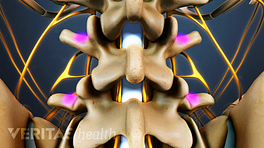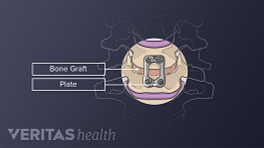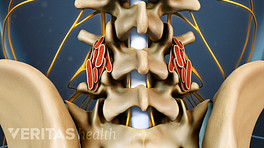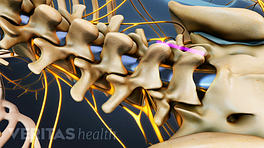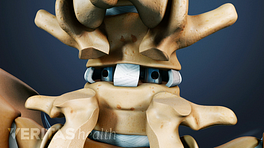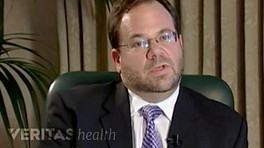Any type of spine fusion joins together, or fuses, a spinal segment to eliminate the motion at that level of the spine.
A lumbar posterolateral gutter fusion is done in the lower back — at L1 through L2, through L5 through S1 at the bottom of the spine. It is most commonly done at L4 through L5 or L5 through S1, as these are the segments most likely to degenerate.
The surgery involves placing a bone graft in the posterolateral portion of the back of the spine.
The procedure begins with a 3-to-6 inch long incision in the midline of the back. The back muscles surrounding the spine are then retracted to the side.
If needed, the surgeon may also perform a laminectomy along with the fusion, to remove arthritic bone or other material putting pressure on the spinal nerves.
Bone graft is retrieved from the iliac crest, the uppermost portion of the back of the pelvis. Most surgeons use the same incision for retrieving the bone graft and for the fusion. Synthetic or cadaver bone graft may also be used.
The back muscles that attach to the transverse processes are then lifted up, exposing the posterolateral area and creating a bed for the bone graft.
The posterolateral area is used because it has a high concentration of blood vessels that help the body generate the new tissue needed to create the bone fusion.
The bone graft morsels are laid out on the exposed posterolateral area.
The surgeon then moves the muscles back down over the graft, generating tension that will hold it in place as the body heals.
The process is repeated on the other side of the spine so that both sides can fuse.
The surgeon may also use spinal instrumentation, such as pedicle screws and rods, to provide additional stability while the bone fusion is healing together.
Over the next several months, the body's natural healing response will help the bone graft and adjacent vertebral bodies fuse into a single bone.
In This Article:
- Posterolateral Gutter Spine Fusion Surgery
- After Posterolateral Gutter Fusion Surgery: Risks and Complications
- Posterolateral Gutter Fusion Surgery Video

